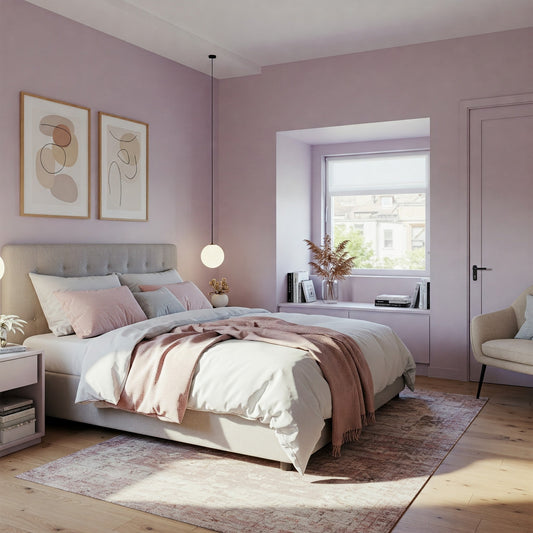Furnishing and designing your home is a major investment, both financially and creatively. The costs can quickly add up, and it’s easy to feel lost when trying to stick to a budget. Whether you're transforming a single room or outfitting your entire home, understanding how much to spend and where to allocate your funds is key. In this guide, we’ll break down realistic costs, budgeting strategies, and smart spending tips to help you create a home that reflects your style—without unnecessary financial stress.

How Much Do Most Homeowners Spend?
A good rule of thumb for budgeting interior design and furnishing is to allocate 7-10% of your home’s value for a well-designed space with mid-range products. If you’re aiming for high-end designer finishes, expect to spend at least 25% of your home’s value.
On average, homeowners spend around $5,000 per room, but costs vary based on room size and design complexity. A small room makeover typically ranges from $3,000 to $10,000, while larger rooms or open-concept spaces may require $10,000 to $25,000. Full-home furnishing costs can range from $20,000 to over $100,000, depending on the level of customization and quality of materials chosen.
Track Your Budget
Staying within your furnishing and design budget requires careful tracking of expenses. The easiest ways to do everything in one place is using Nestingale's tool! Our room project allows you to try out furniture in your room and the total cost of all the furniture you put in your virtual room is summed up for you. You can not only try furniture, measure the cost, but also buy it with free shipment at one place. Since all the tools are completely free, why don't you check it out now?
A lot of people also recommend using a simple Excel spreadsheet. Divide the sheet by rooms and list all planned purchases under each. Research prices for each item across various websites and brands to get a complete picture of costs. Different retailers cater to different customer tiers, so be sure to compare. Assign an estimated budget for each item before you start shopping, and update it as you make purchases to avoid overspending and keep your finances in check.
Additionally, don’t forget to account for hidden costs such as labor fees, delivery charges, installation costs, and—if applicable—interior designer fees (learn more about whether you should hire a designer). These extra costs can add up quickly and impact your overall budget.
For a real-world example, this Reddit post breaks down the actual costs of furnishing a home. The author found affordable or free furniture through retailers and Facebook Marketplace, which is a great way to stretch your budget. By sourcing budget-friendly pieces, you can focus your spending on a few high-quality or designer items that you truly love and value.
Smart Money-Saving Tips
Don't overlook thrift stores, Facebook Marketplace, or budget furniture outlets—they often have incredible deals on quality pieces. Some of your neighbors might leave unwanted furniture on the curb for pickup, so a casual walk around your area might lead to unexpected finds.
Another key strategy is to furnish your home gradually rather than buying everything at once. That old chair from your previous home? Keep using it until you find a piece you truly love. Decorating should be an ongoing process, allowing you to invest in quality over time instead of pressuring yourself into immediate purchases.
To maximize savings, shop off-season—many retailers offer major discounts on furniture in late summer and winter when demand is lower. Signing up for retailer newsletters or working with a designer can also unlock exclusive sales and discount codes. Lastly, consider DIY projects for smaller decor updates—simple fixes like reupholstering a chair or repainting a dresser can give your space a high-end look for a fraction of the cost.
Where to Splurge, Where to Save
The key to budgeting wisely is understanding your own lifestyle and priorities. Ask yourself: Where do I spend the most time at home? What aspects of my living space matter most to me? If you work and relax on the couch for 8+ hours a day, then investing in a high-quality, ergonomic, and multifunctional sofa makes sense. On that note, check out Nestingale’s sofa collection. We offer a range of well-crafted options designed to make your everyday more enjoyable.
A general guideline is to prioritize spending on foundational and functional elements—such as flooring, ceilings, windows, and plumbing—since these are difficult and costly to change later. Before cutting costs, ask yourself: "Can I easily upgrade or replace this in the future?" If the answer is no, it’s usually worth the splurge.
Conclusion
Designing and furnishing your home doesn’t have to be a stressful financial burden. By tracking your budget, exploring affordable options, and making thoughtful investments, you can create a beautiful, functional space that fits your lifestyle. Along the way, don’t hesitate to share your journey—budgeting tips, design wins, and even the little challenges—with others who are going through the same process. Join our community and help build a space where homeowners support and inspire one another.
Take your time, shop smart, and focus on what truly matters. Home design is a journey, not a race—and with patience and planning, you’ll create a space you’ll love for years to come.
Since you're here, you’re probably on an exciting home decor journey—welcome! Be sure to explore all the helpful tools Nestingale has to offer. We promise they’ll make the process easier (and more fun!).
Design Gallery | Furniture Collection | Visualization Tool
Reference:
- How to Plan For Your Next Interior Design Project
- Cost to Furnish a House: Breakdown by Room and Budget















 Company
Company Customer Support
Customer Support SHIPPING INFO
SHIPPING INFO